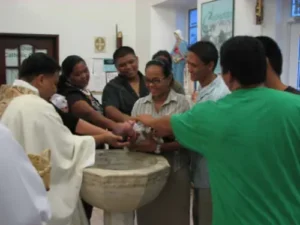
Kumpaire/Pari’
Kumpaire or pari’ is a religious and social term used to describe the relationship between parents and their child’s godfather. The word kumparie was borrowed

Kumpaire or pari’ is a religious and social term used to describe the relationship between parents and their child’s godfather. The word kumparie was borrowed

Kumaire, is religious and social term to describe the relationship between parents and their child’s godmother, borrowed from the Spanish comadre and appropriated into CHamoru
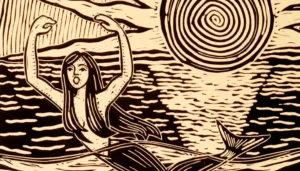
The mythological maiden, Sirena, in the ‘I Tetehnan’ manuscript is considered a proverb, and not a legend.

Fort Nuestra Señora de la Soledåd, or Fort Soledad, the last of four Spanish fortifications built in the village of Humåtak/Umatac, is located atop a
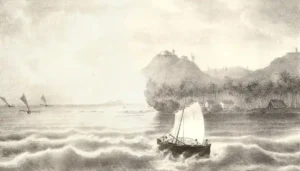
Fort Santo Angel was the second of four Spanish fortifications built in the southern village of Humåtak/Umatac in the midst of the galleon trade era.
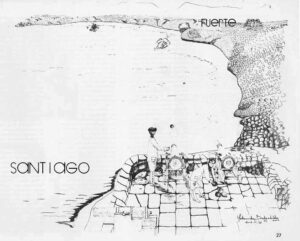
Fort Santiago was the second of three Spanish forts built to defend the anchorage at Apra Harbor. The fort was constructed at the tip of

Fort Santa Agueda, the only surviving Spanish fort in Hagåtña, sits atop Apugan Hill on the western coast of Guam. The fort, now commonly called
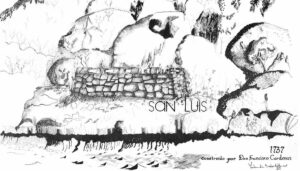
Fort San Luis was the first of three Spanish fortifications constructed to protect the anchorage at Apra Harbor. The fort was constructed on the northern
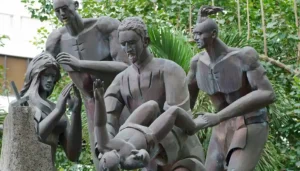
History will remember Maga’låhi Matå’pang from Tomhom (Tumon) as the man responsible for murdering Father Diego Luís de San Vitores, the Spanish Jesuit priest who
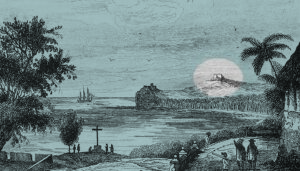
Fort San Jose, built about 1805, was the third of four Spanish fortifications built in the southern village of Humåtak/Umatac. The fort was constructed atop